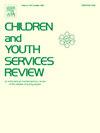爱尔兰共和国1840年至1960年保护残疾儿童的历史
IF 2.4
2区 社会学
Q1 FAMILY STUDIES
引用次数: 0
摘要
这篇文章提供了1840年至1960年间爱尔兰共和国保护残疾儿童的历史。其中,保障涉及为促进需要保护的残疾儿童的安全和福利而采取的直接和间接措施。本书讨论了历史的两个不同的子阶段。第一个阶段的特点是非正式的家庭照料和隔离的机构照料。在此范围内,医疗、宗教和慈善机构的话语和赞助下开展了机构护理。第二个阶段是一个新的国家对包容和进步进行干预的历史时期。在这一时期,机构化达到了最惊人的顶峰,但在广泛的机构护理曝光后急剧下降。文章的重点是关键的变化,在这些阶段,儿童保护和福利政策和实践在爱尔兰残疾儿童。中心论点是,在缺乏任何重要的社区和社会参与的证据的情况下,教会、国家和直系亲属在保护残疾儿童方面发挥了不同的作用。这一论点得到历史记载的证实,并从历史记载中浮现出来。为了阐述这一命题的支撑理由,在讨论中应用了一个肯定的残疾模型,从理论上巩固了过去的学习。最后,文章强调了历史作为未来卓越政策和实践的丰富智慧来源的重要性。本文章由计算机程序翻译,如有差异,请以英文原文为准。
A history of safeguarding disabled children from 1840 to 1960 in the Republic of Ireland
This article provides a history of safeguarding of disabled children between 1840 and 1960 in the Republic of Ireland. Therein, safeguarding involves direct and indirect measures undertaken to promote the safety and welfare of disabled children in need of protection. Two distinct subphases of history are addressed. The first is a period characterised by informal familial care versus segregated institutional care. Within this, institutional care operated under medical, religious and philanthropic discourses and auspices. The second is a historical period when newfound State intervention toward inclusion and progression was evident. This period saw institutionalisation reach its most staggering peaks, only to sharply decline in the wake of revelations about widespread institutional care. The article focuses on key changes, across these phases, to child protection and welfare policy and practice in Ireland for disabled children. The central argument is that the Church, the State and the immediate family have had varying roles in safeguarding disabled children, in the context of a lack of evidence of any significant community and societal involvement. This argument is substantiated by and emergent from accounts of history. To elaborate upon the sustaining reasons for this proposition, an affirmative model of disability is applied in discussion, to theoretically consolidate learning from the past. In concluding, the article emphasises the importance of history as a rich source of wisdom for future excellence in policy and practice.
求助全文
通过发布文献求助,成功后即可免费获取论文全文。
去求助
来源期刊

Children and Youth Services Review
Multiple-
CiteScore
6.30
自引率
6.10%
发文量
303
期刊介绍:
Children and Youth Services Review is an interdisciplinary forum for critical scholarship regarding service programs for children and youth. The journal will publish full-length articles, current research and policy notes, and book reviews.
 求助内容:
求助内容: 应助结果提醒方式:
应助结果提醒方式:


